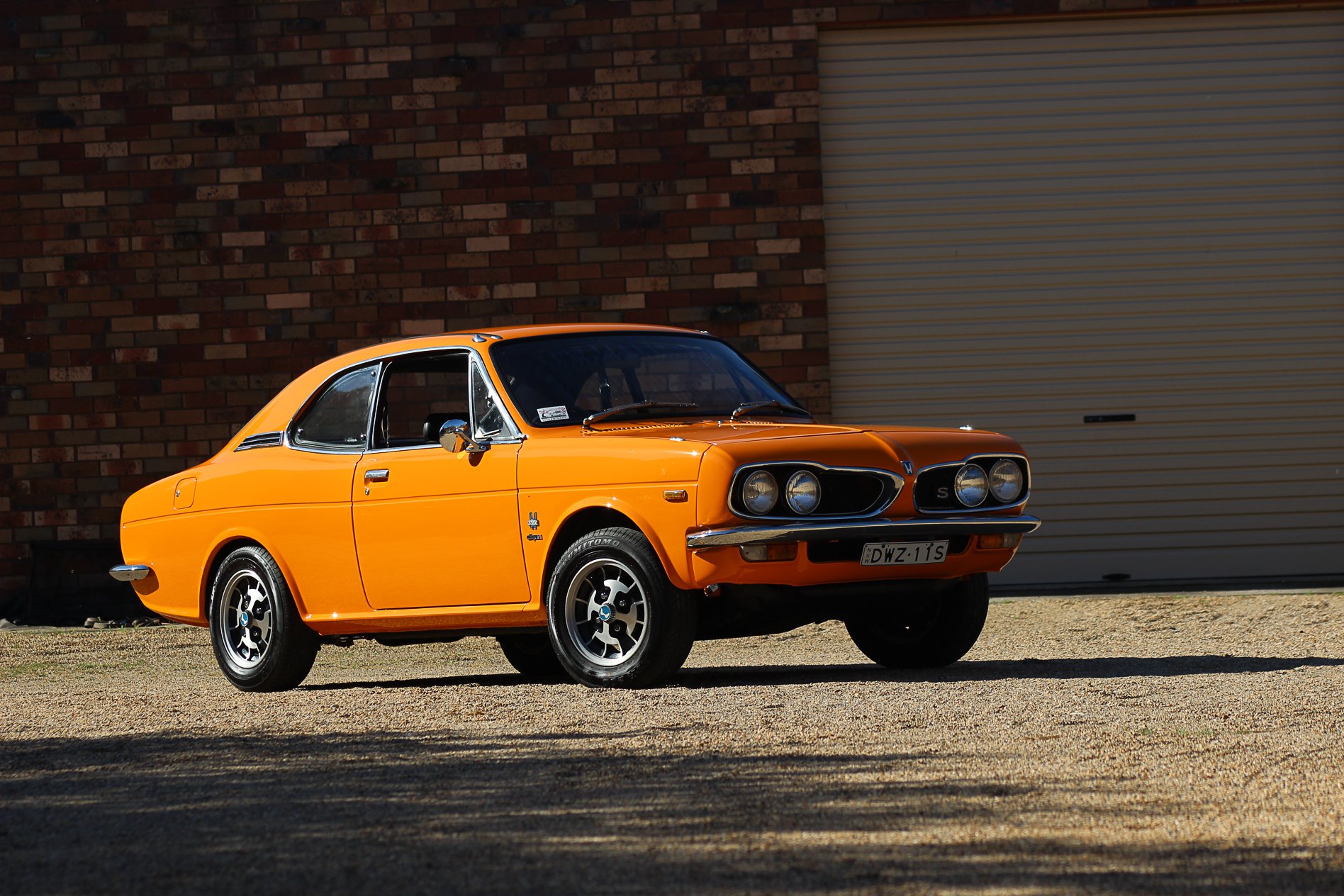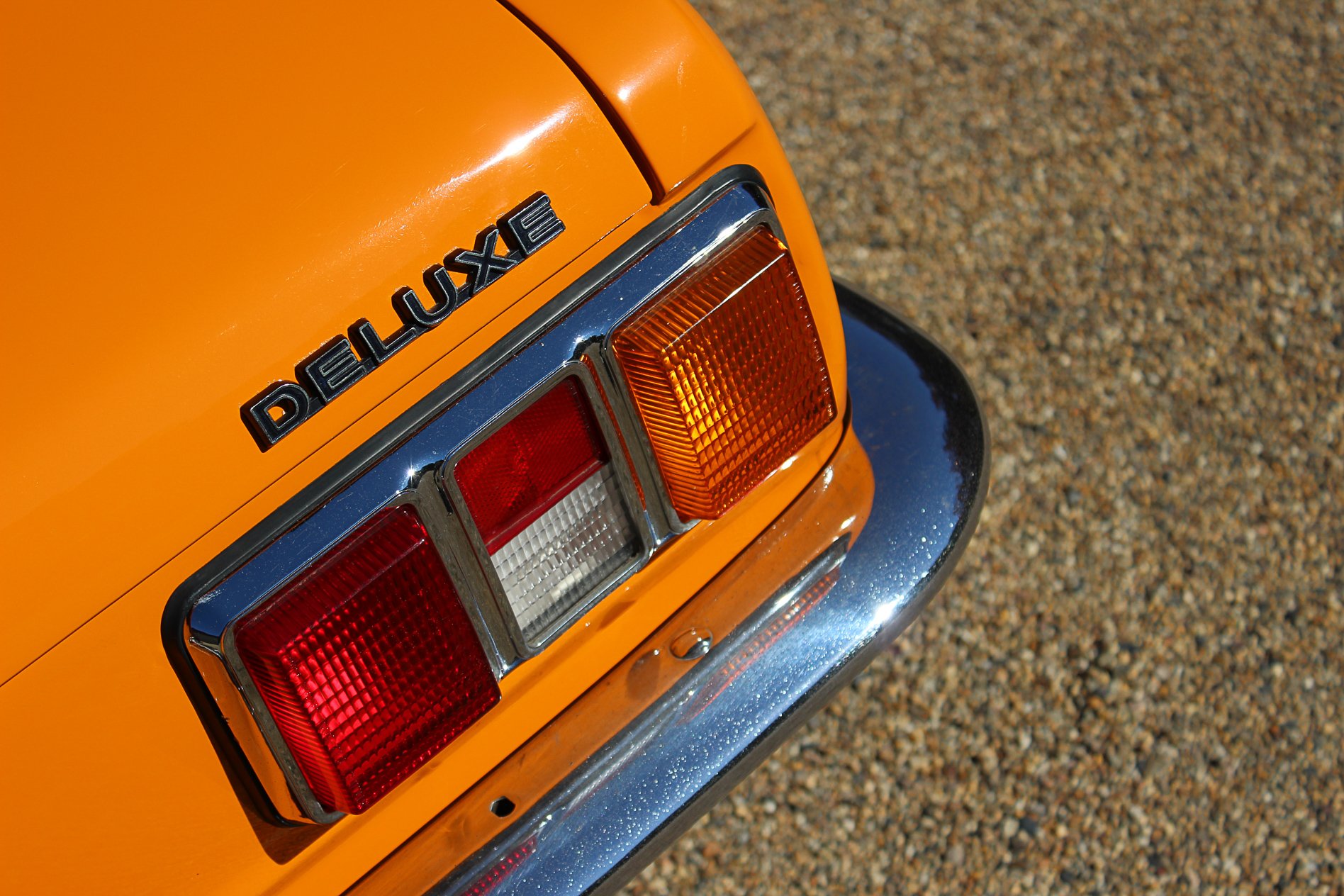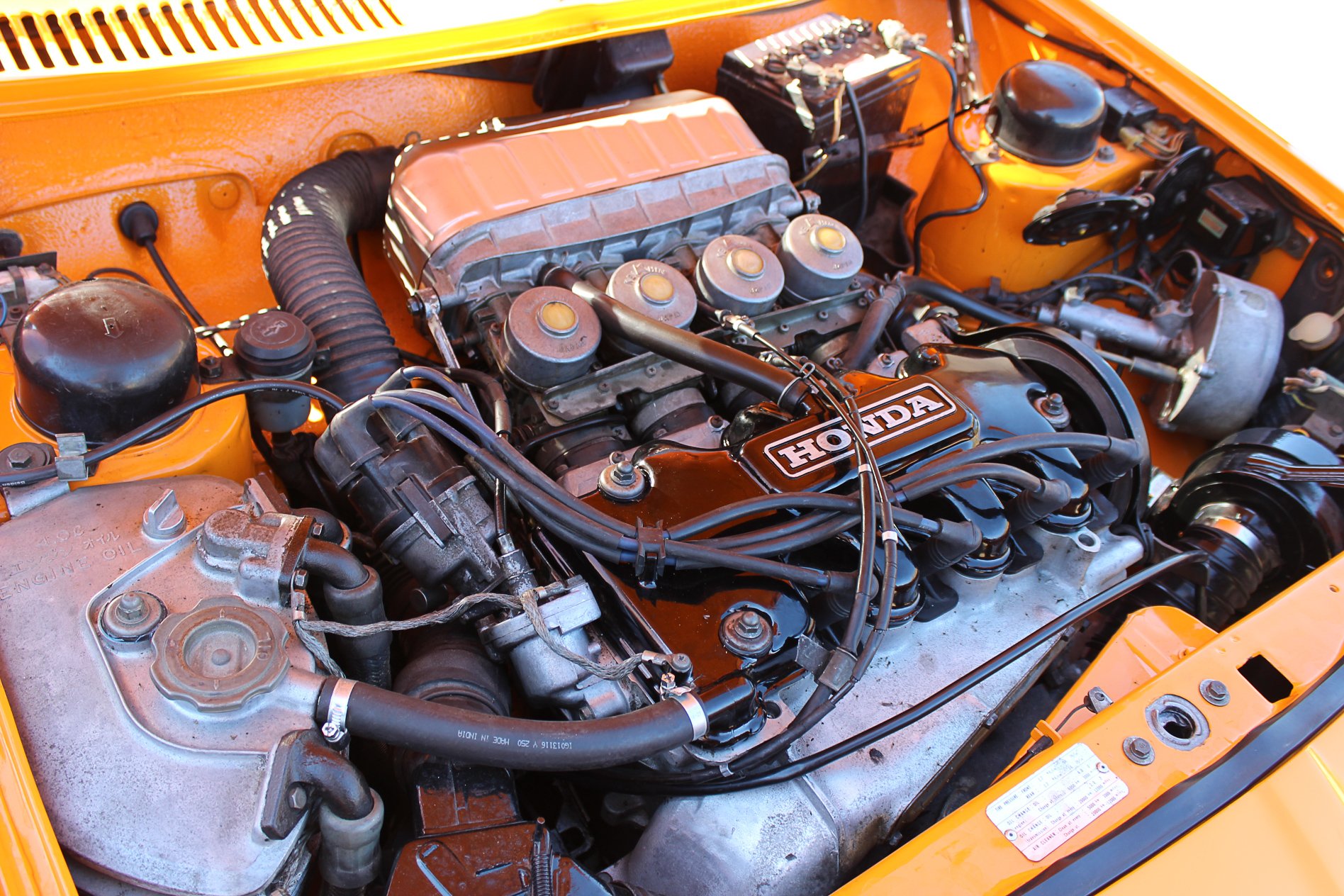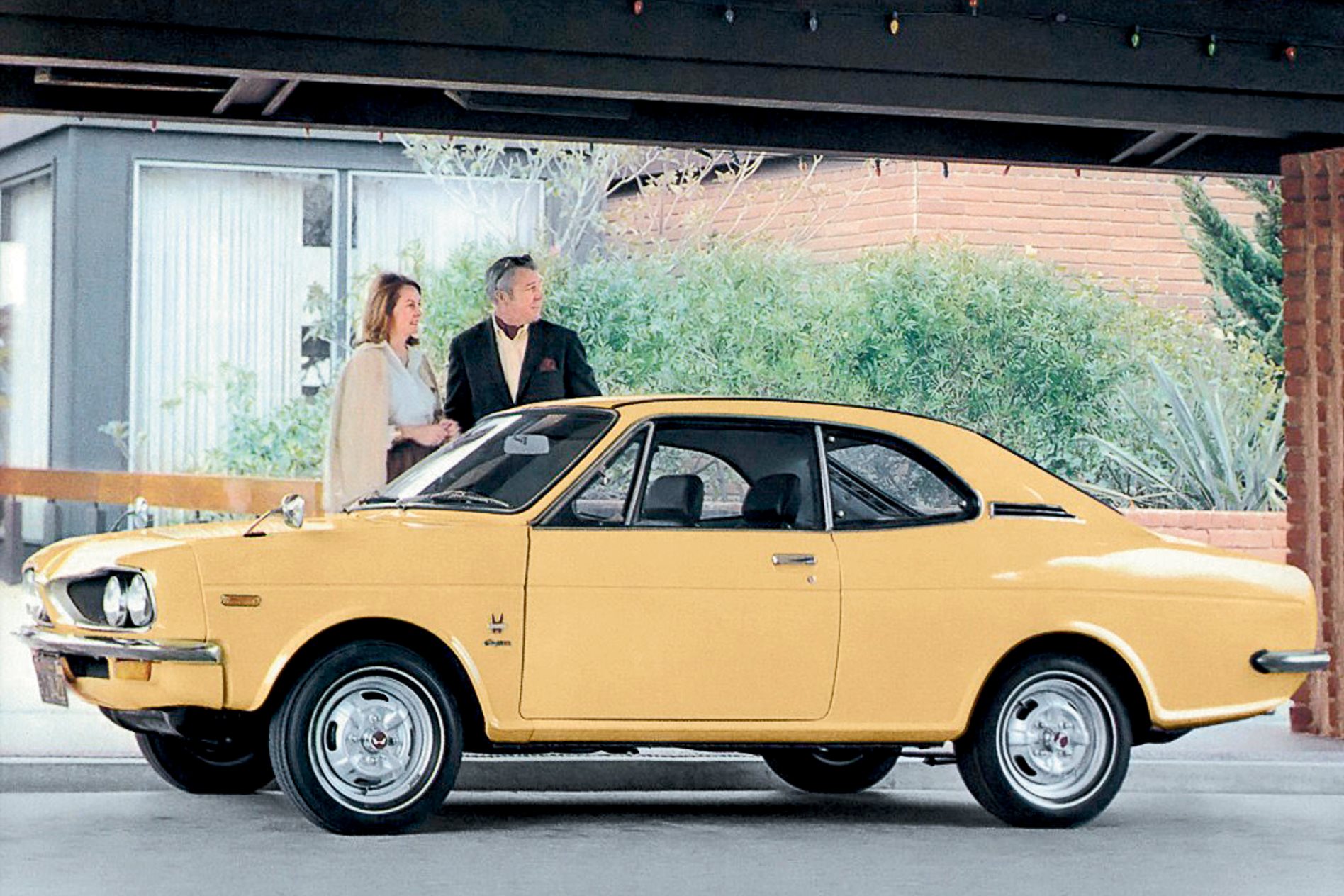“The basic management philosophy of our company is originality, and accordingly our goal has always been to spur demand by introducing products that only Honda can create.”
With those words – absolutely true of Honda in 1969 – Soichiro Honda introduced his company’s biggest and most advanced car to that date, the 1300 sedan and coupe.

Like Honda’s preceding kei-class sports (S500/600/800) and city (N360) cars, the 1300 was clearly from a different mindset than its rivals, the Toyota Corona and Datsun Bluebird. The Honda was front-drive, its all-alloy, 1.3-litre transverse four-cylinder engine being innovatively air-cooled, dry-sumped and redlined at 7500rpm.
The base, single-carb ‘77’ version made 74kW, 10 percent more than Toyota’s 1.6-litre, while the top ‘99’ version had four carburettors and made an impressive 86kW at 7300rpm.
Soichiro Honda, who in just 20 years had built the world’s biggest motorcycle company, personally oversaw the 1300 program. His influence was evident in everything from its Pontiac Firebird-inspired nose, to air cooling for the engine, to an unusual take on swing-axle rear suspension.

A manufacturing innovation for the handsome coupe would eliminate the time-consuming and toxic process of soldering roof joins, by mating full-height side pressings to a central roof panel, the seams concealed beneath simple trim strips.
Australia never saw the sedan, but in 1971 the 1300 Coupe, particularly in the hi-po 9 guise, was rapturously received by the press. It was pricey – the base 7, at $2989, was on par with an HT Monaro V8, and the 9 was $300 more – but it drove even better than it looked.
Local testers raved about the 9’s precise steering and tenacious cornering (partly thanks to equal-length driveshafts), controlled and comfortable ride (helped by a rigid body and strong subframes) and an engine which, owing to its enclosed design, was as quiet and sophisticated as it was rev-hungry and rollicking.
That excellence came at too high a price, even with Honda reportedly selling each one at a loss. The 1300 was Soichiro’s last hurrah as an engineer; he was persuaded to focus on being president. His company’s next new car would be water-cooled, quite conventional and a world-beating success: the Civic.
Cool runnings
The all-alloy, sohc 1298cc four’s Duo Dyna Air Cooling echoed water-cooled design, with air channels cast in the block and head, blown by a crankshaft-mounted impeller. The ‘99’ engine, with four Keihin carbs and higher compression, made 86kW at 7300rpm and 103Nm at 5000rpm, and hit 0-60mph in 11.7sec via a four-speed manual ’box.

Sporting goods
The 905kg coupe offered a sporty cockpit, with three-spoke steering wheel, better-than-average instrumentation, reclining bucket seats and plenty of black vinyl. MacPherson strut/A-arm front mated well with an unusual, swing-axle rear, each (leaf-sprung) axle pivoting from the opposite side of the car, minimising camber change.
1969 Honda 1300 Coupe 9 in numbers
- 101 – kW output of 1300-powered 1969 Hayashi Carman Apache sports racer
- 187 – top speed in km/h
- 8102 – 9s produced, of 48,249 1300 coupes in total
- 731 – coupes imported to Australia, of only 1053 exported





